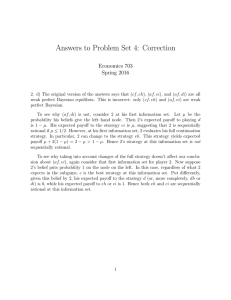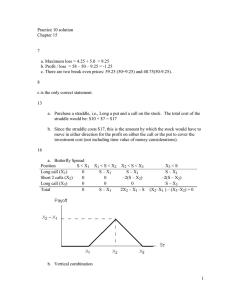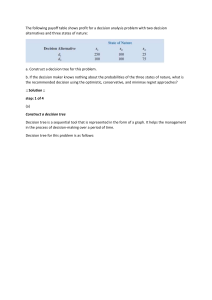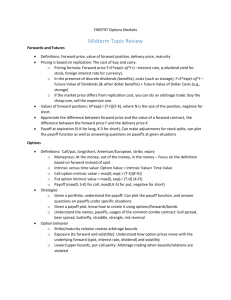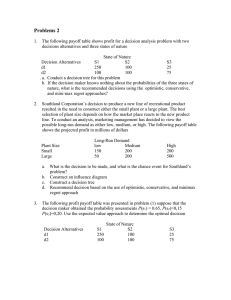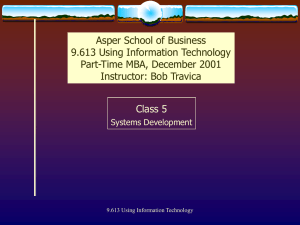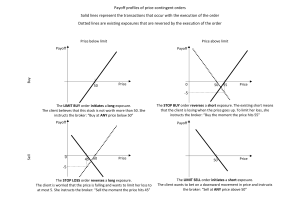Cases on Managerial Decision Analysis Case Study 6 The Venture Capitalist
advertisement
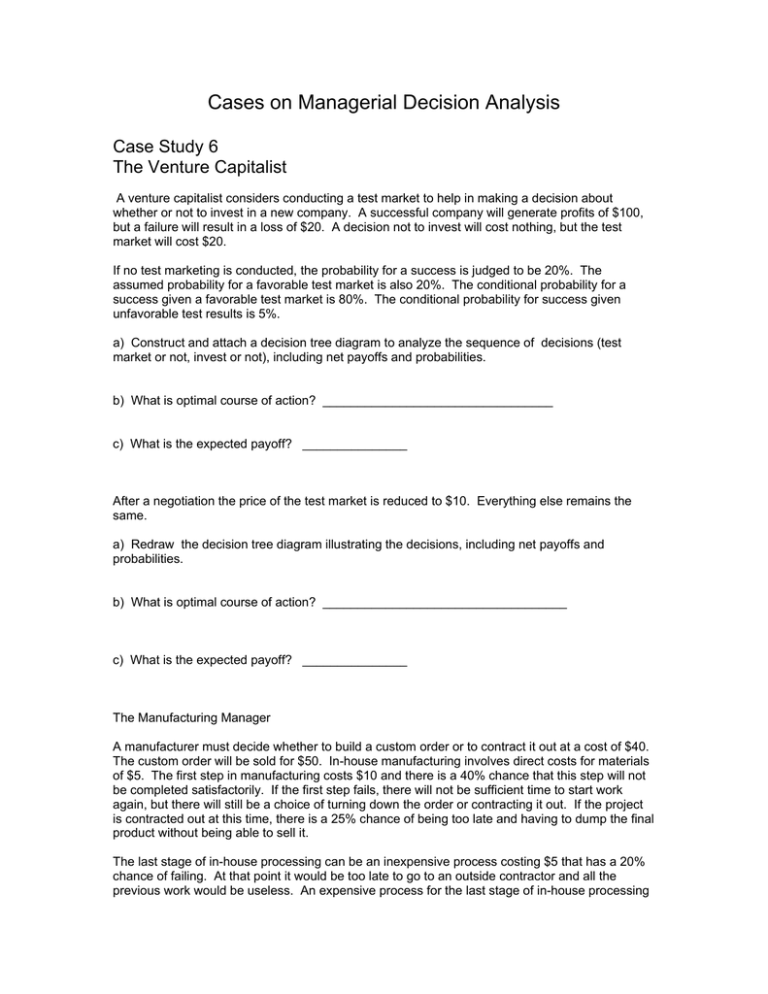
Cases on Managerial Decision Analysis Case Study 6 The Venture Capitalist A venture capitalist considers conducting a test market to help in making a decision about whether or not to invest in a new company. A successful company will generate profits of $100, but a failure will result in a loss of $20. A decision not to invest will cost nothing, but the test market will cost $20. If no test marketing is conducted, the probability for a success is judged to be 20%. The assumed probability for a favorable test market is also 20%. The conditional probability for a success given a favorable test market is 80%. The conditional probability for success given unfavorable test results is 5%. a) Construct and attach a decision tree diagram to analyze the sequence of decisions (test market or not, invest or not), including net payoffs and probabilities. b) What is optimal course of action? _________________________________ c) What is the expected payoff? _______________ After a negotiation the price of the test market is reduced to $10. Everything else remains the same. a) Redraw the decision tree diagram illustrating the decisions, including net payoffs and probabilities. b) What is optimal course of action? ___________________________________ c) What is the expected payoff? _______________ The Manufacturing Manager A manufacturer must decide whether to build a custom order or to contract it out at a cost of $40. The custom order will be sold for $50. In-house manufacturing involves direct costs for materials of $5. The first step in manufacturing costs $10 and there is a 40% chance that this step will not be completed satisfactorily. If the first step fails, there will not be sufficient time to start work again, but there will still be a choice of turning down the order or contracting it out. If the project is contracted out at this time, there is a 25% chance of being too late and having to dump the final product without being able to sell it. The last stage of in-house processing can be an inexpensive process costing $5 that has a 20% chance of failing. At that point it would be too late to go to an outside contractor and all the previous work would be useless. An expensive process for the last stage of in-house processing always works, but it costs $10. a) Using net cash flow (revenue minus costs) as the payoff measure, diagram the manager’s decision tree. b) What action maximizes expected payoff? _______________________________ What is the expected payoff? _____________ What if the company learns that if after the first stage of the manufacturing process fails that they would still be able to contract out the product with a 100% guarantee of success (their subcontractor, in order to get the job, promises to finish the product in less time). a) Redraw the decision tree and perform backward induction to determine what course of action now maximizes expected profit. b) What is the expected payoff? ______________ c) Comment on this result.


